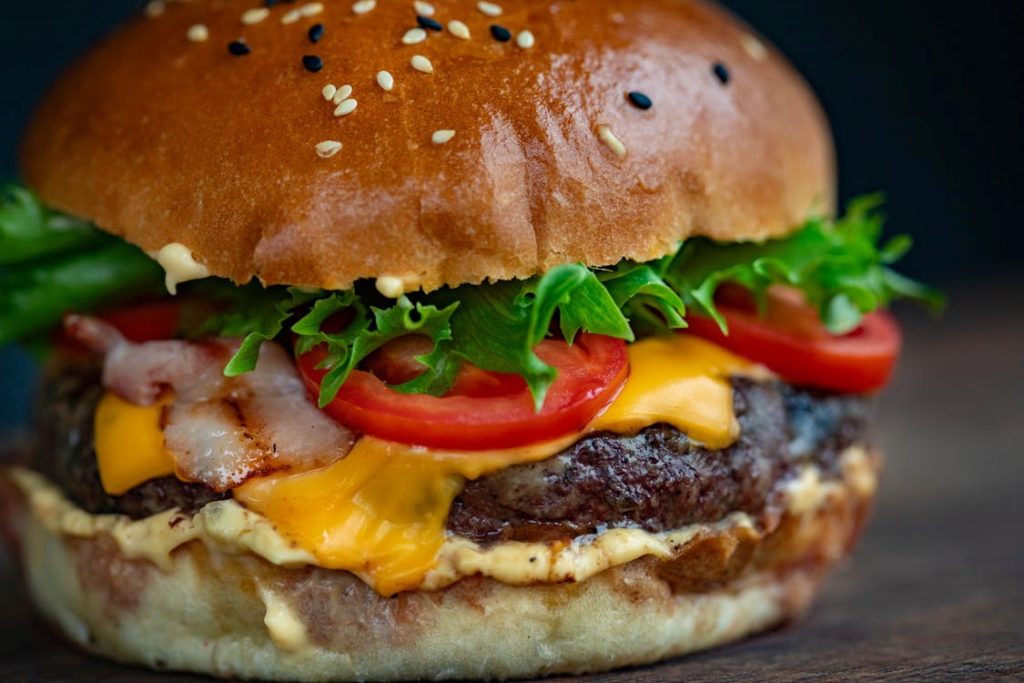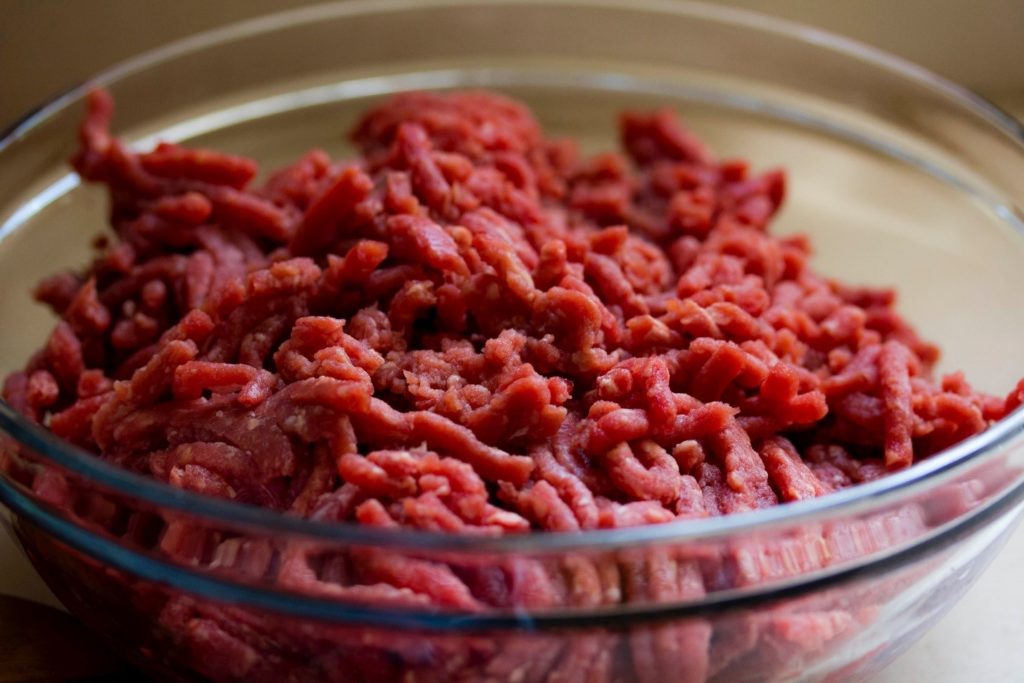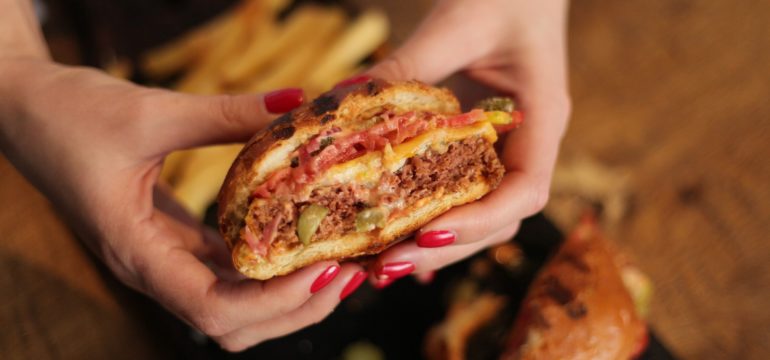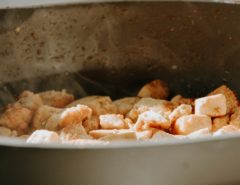By: Elliot Dhuey
Introduction
I want to preface this article with the stark statistic that was reported by the 2nd Sustainable Development Goal by the United Nations, which states that there are more than 800 million undernourished people worldwide today and this number will increase to 2 billion by the year 2050 if we maintain our current food system trends (1). Sustainable methods of producing and consuming food are necessary for the sake of humanity. Companies like Beyond Meat and Impossible Foods have developed alternatives to animal meat products as a result of the grave environmental impacts associated with the way we produce meat in our current food system. However, there has been a great amount of confusion or misunderstanding around the development of these plant-based meat alternatives amongst the public, and even food scientists.
Most recently, I’ve had a friend ask me how Beyond Meat and Impossible Foods burgers were made and if they were safe. She was hesitant to try them because she believed that if they are made in a lab petri dish it wouldn’t be safe or natural to consume. After explaining to her that they were not lab-grown or cell-based meats but rather plant-based meats, I realized that I didn’t exactly know how they were made or what the difference was between the two products. My hopes are that by understanding how these two major companies create their products, it will help mitigate consumer’s fear surrounding these products. For this article, I will focus on how the two companies produce their burger substitutes.

Photo by Valeria Boltneva at Pexels
Beyond Meat
Recently, Beyond Meat has become a household brand for plant-based meat products. Beyond Meat really does a great job of focusing on mimicking the texture of animal meat. The proteins in animal meats are fibrous and three-dimensional, which contributes to firmness and cohesion of the food matrix. Water, carbohydrates, fats, and flavors are entrapped in this meat matrix and delivered to the consumers in a desirable form (i.e. burger patties). Thus, the goal of the company was to create a plant-based protein that has the same three-dimensional protein network. In order to achieve this, the company has a patent for a process to alter the structure and presentation of plant proteins (in the case of Beyond Meat burgers, they used pea protein). The pea protein is first formed into a dough under alkaline conditions, extruded to help denature and align the proteins in a fibrous, meat-like network, and then set into a fixed fibrous structure as it is cooled through a die (2). In other words, the vegetable protein undergoes great pressure and shear to form it into a texture similar to animal meat.
The following ingredients are found in the Beyond Meat Burger (3):
Water, Pea Protein Isolate*, Expeller-Pressed Canola Oil, Refined Coconut Oil, Rice Protein, Natural Flavors, Cocoa Butter, Mung Bean Protein, Methylcellulose, Potato Starch, Apple Extract, Salt, Potassium Chloride, Vinegar, Lemon Juice Concentrate, Sunflower Lecithin, Pomegranate Fruit Powder, Beet Juice Extract (for color)
Aside from the texture component of the protein, the company uses coconut oil to simulate the marbled appearance of animal meats. Coconut oil has a fatty profile that melts in your mouth, much like the fats found in meat. There is also beet juice used for the red color. Beets contain a natural pigment called betalains which are stable at room temperature but highly unstable at high temperature. This makes it an ideal colorant for a burger because as you cook it, it will brown as the betalains degrade. The other ingredients are added for texture/ingredient binding, flavor, and maintaining product quality/ stability.

Impossible Foods
Contrary to the focus on texture that Beyond Meat has done, Impossible Foods has a stronger focus on the flavor development of their burgers. While Beyond Meat relies on a flavor additive to recreate that desirable, meaty taste, Impossible Foods has developed a functional ingredient to deliver its flavor – soy leghemoglobin.
The following ingredients are found in the Impossible Foods Burger (4):
Water, Soy Protein Concentrate, Coconut Oil, Sunflower Oil, Natural Flavors, 2% or less of: Potato Protein, Methylcellulose, Yeast Extract, Cultured Dextrose, Food Starch Modified, Soy Leghemoglobin, Salt, Soy Protein Isolate, Mixed Tocopherols (Vitamin E), Zinc Gluconate, Thiamine Hydrochloride (Vitamin B1), Sodium Ascorbate (Vitamin C), Niacin, Pyridoxine Hydrochloride (Vitamin B6), Riboflavin (Vitamin B2), Vitamin B12.
The important flavors that contribute to the meaty profile of animal meat are formed during cooking. Hemoglobin in meat is believed to act as a precursor to many of the flavors that develop as meat is heated at high temperatures. This compound is made up of a highly conjugated heterocyclic ring that is complexed to an iron ion, known as heme bound, to a protein. Similar structures are found in legumes. Impossible Foods has harnessed the equivalent of hemoglobin in soybeans, known as soy leghemoglobin, as an ingredient in the Impossible Burger. Thus, when the leghemoglobin is added to an uncooked product along with other flavor precursors (like lipids) that meaty flavor profile can be formed upon cooking the burger. The combinations of different levels of heme-containing proteins and flavor precursors can be used to achieve various meat-like flavors (such as beef, chicken, pork and etc.) (5). Hundreds of flavors can be formed when the heme-containing protein denatures with heat and reacts with amino acids, vitamins, and sugars (6). The soy leghemoglobin can be sourced and isolated from the plants themselves or in the case of Impossible Foods, through a genetically-modified yeast. By inserting the leghemoglobin gene into the yeast Pichia pastoris, soy leghemoglobin can be produced by fermentation at commercial scales (7).
Now that the key to their meaty flavor has been explored, they have a process of making their burger similar to Beyond Meat. A dough is first formed with plant proteins and fibrous components (extruded plant proteins). Flavor additives and fat are added to multiple components of the dough to help distribute and mimic the properties of animal meat. After the dough is heated and additional fats and flavors are added, binding agents with soy leghemoglobin are added. It is important to note that soy leghemoglobin is added after the dough is cooled so that the leghemoglobin doesn’t prematurely denature and turn brown (8).
Soy leghemoglobin not only serves as a flavoring agent in the Impossible Foods burger, but it also contributes to the red color. Prior to cooking, the heme iron is in its ferrous (+2 oxidation) state which makes it the red color. However, after heating, the iron will oxidize with oxygen in the air to form the ferric state (or +3 oxidation) and turn brown. The change from red to brown is an experience that consumers look for when cooking animal meat products to determine when it is ready to eat. This creative multifunctional use of soy leghemoglobin allows for the reduction of additional colorants.

Photo by Skitterphoto at Pexels
Conclusion
In general, Beyond Meat emphasizes texture in the production of their burger-equivalent while Impossible Foods emphasizes flavor. The extensive research and development that has been done to create plant-based products that deliver similar sensorial properties as animal products gives our society an optimistic look into a future where people may have to switch to a more sustainable diet. To those who were not aware of how plant-based meats are made, it is a safe and innovative process that will give you a similar experience of consuming food you are already familiar with.
References:
- Martin. Goal 2: Zero Hunger [Internet]. United Nations Sustainable Development. [cited 2019 Dec 9]. Available from: https://www.un.org/sustainabledevelopment/hunger/
- Geistlinger T. Plant based meat structured protein products [Internet]. WO2015161099A1, 2015 [cited 2019 Dec 6]. Available from: https://patents.google.com/patent/WO2015161099A1/en
- Beyond BurgerTM [Internet]. Beyond Meat – The Future of ProteinTM. [cited 2019 Dec 9]. Available from: https://www.beyondmeat.com/products/the-beyond-burger/
- What are the ingredients? [Internet]. Impossible Foods. [cited 2019 Dec 9]. Available from: http://faq.impossiblefoods.com/hc/en-us/articles/360018937494-What-are-the-ingredients-
- Fraser R, Brown PO, Karr J, Holz-Schietinger C, Cohn E. Methods and compositions for affecting the flavor and aroma profile of consumables [Internet]. US9700067B2, 2017 [cited 2019 Dec 6]. Available from: https://patents.google.com/patent/US9700067B2/en
- FRASER R, Davis SC, BROWN PO. Secretion of heme-containing polypeptides [Internet]. EP3044320A2, 2016 [cited 2019 Dec 6]. Available from: https://patents.google.com/patent/EP3044320A2/en
- Fraser RZ, Shitut M, Agrawal P, Mendes O, Klapholz S. Safety Evaluation of Soy Leghemoglobin Protein Preparation Derived From Pichia pastoris , Intended for Use as a Flavor Catalyst in Plant-Based Meat. Int J Toxicol. 2018 May;37(3):241–62.
- VARADAN R, SOLOMATIN S, HOLZ-SCHIETINGER C, COHN E, KLAPHOLZ-BROWN A, SHIU JW-Y, et al. Ground meat replicas [Internet]. WO2015153666A1, 2015 [cited 2019 Dec 6]. Available from: https://patents.google.com/patent/WO2015153666A1/en
- Featured Image: Image by Mojo Jojo from Pixabay

Elliot Dhuey | Linkedin
Elliot graduated with his B.S. from the University of Wisconsin – Madison with a degree in Food Science and Technology. He is currently pursuing a M.S. in Food Science from The Ohio State University in a food packaging lab. His research focuses on optimizing canned food packaging to ensure food security for future generations. During Elliot’s free time he enjoys being a micro-hobbyist (enjoys activities that occupy his time for hours to weeks and then moves on to a completely new activity). He explores home fermentations of various products, trying the newest breakfast cereals, beer tasting, wine tasting, and discovering new restaurants. Lastly, his passion extends beyond food and the security of it, he enjoys conversations about justice and equality for everyone and how we can holistically remedy cycles of injustice and poverty.






Fascinating insight into the science behind plant-based meat! Beyond Meat focuses on texture, while Impossible Foods prioritizes flavor, making both options promising for a sustainable future.